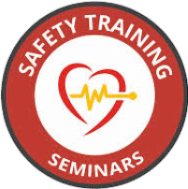Cardiopulmonary Resuscitation (CPR) saves lives. That’s the simplest way to put it. When someone experiences cardiac arrest, every second matters. CPR can mean the difference between life and death by restoring blood flow and oxygen to vital organs, such as the brain, until professional medical help arrives.
Whether you’re a healthcare professional or a concerned citizen, understanding CPR’s purpose and impact is critical. This blog explores everything from the history of CPR to its vast life-saving potential, the role of healthcare providers, and how to get certified. By the end, you’ll know why mastering CPR is a skill everyone should consider.
What Is CPR and Its Role in Healthcare
CPR stands for Cardiopulmonary Resuscitation, a life-saving emergency procedure performed when the heart stops beating. CPR involves two key components:
- Chest compressions to manually pump blood through the body.
- Rescue breaths to deliver oxygen to the lungs.
The primary goal of CPR is to maintain circulation and oxygenation to vital organs, especially the brain, reducing the risk of irreversible damage.
CPR has universal applications:
- Hospitals: Healthcare professionals regularly perform CPR in critical care settings, ensuring patients have the best chance at recovery.
- Public emergencies: Cardiac arrests can happen anywhere—home, work, or even the grocery store. Having bystanders who know CPR can literally save lives.
The History of CPR
CPR has evolved significantly over time. Here’s a brief timeline of its development:
- 1740: The Paris Academy of Sciences suggests the mouth-to-mouth method for drowning victims.
- 1950s: Mouth-to-mouth resuscitation is popularized as a critical technique in saving lives.
- 1960: Dr. James Elam, along with Dr. Peter Safar, promotes combining mouth-to-mouth with chest compressions, forming modern CPR techniques.
- 1974: The American Heart Association (AHA) establishes official CPR guidelines, emphasizing broader awareness and public training.
- Present Day: With advances in science, CPR protocols have been refined for maximum effectiveness.
Through decades of research and innovation, CPR has become a standard response to cardiac emergencies and continues to save millions of lives.
Importance of CPR in Saving Lives
Every year, more than 356,000 cardiac arrests occur outside of hospitals in the United States alone. Here are some shocking, yet critical, statistics from AHA:
- 88% of cardiac arrests happen at home.
- Survival rates drop 7-10% for every minute CPR is delayed.
- Performing CPR within the first few minutes of cardiac arrest can double or triple survival chances.
CPR lies at the heart of the “chain of survival”, a concept developed by the AHA. The five key links are:
- Early recognition of cardiac arrest and activation of the emergency response system.
- Immediate high-quality CPR.
- Rapid defibrillation.
- Advanced life support.
- Post-resuscitation care.
The quicker CPR is administered, the better the chance of maintaining a strong chain and saving a life.
The Role of Healthcare Professionals in CPR
Healthcare professionals are on the front lines of emergencies, which makes CPR competency non-negotiable. Doctors, nurses, paramedics, and even hospital administrators are trained to deliver high-quality CPR within seconds.
Why Is Ongoing Training Necessary?
Medical science changes constantly, and so do best practices for CPR. Regular training and certification ensure healthcare providers stay updated on techniques, improving patient outcomes.
- Basic Life Support (BLS) equips medical professionals with foundational CPR knowledge.
- Advanced Cardiac Life Support (ACLS) goes beyond CPR, teaching advanced protocols like using an automated external defibrillator (AED).
Healthcare professionals prioritize continuing education because even minor improvements can mean major differences in survival rates.
CPR Training and Certification
Becoming CPR certified is straightforward, yet life-changing. Here’s how it works:
- Find a certified organization such as the American Heart Association (AHA) or Safety Training Seminars in your area.
- Enroll in a course—choose from Basic Life Support (BLS), CPR & First Aid, or Advanced Life Support (ALS), based on your needs.
- Attend training sessions (these can vary from a few hours to a full day). Most certifications can now be completed online!
- Pass evaluations to receive your certification, which typically lasts for two years.
Even if you’re not a healthcare worker, CPR is a powerful skill to learn. Many businesses and schools offer training to employees and students, helping to bridge the gap between emergencies and professional medical help.
Debunking Myths About CPR
Misconceptions about CPR can prevent people from stepping in during emergencies. Here are a few myths—and the truths behind them:
- Myth: Only trained professionals should perform CPR.
Truth: Even untrained bystanders can save lives. Studies show hands-only CPR (just chest compressions) is incredibly effective.
- Myth: You can hurt someone by performing CPR incorrectly.
Truth: Any attempt at CPR is better than no action at all. Even if ribs are fractured during compressions, it’s a small price to pay for saving a life.
- Myth: Children shouldn’t learn CPR.
Truth: Many children as young as 10 can successfully learn CPR and be lifesavers at home or school.
Don’t let myths hold you back. Taking action during a crisis can make all the difference.
Key Takeaways
- CPR saves lives. It restores blood flow and delivers oxygen to vital organs, providing a bridge until advanced care arrives.
- Accessible to everyone. CPR is not just for healthcare providers—anyone can learn this life-saving skill.
- Training saves lives. Regular CPR certification ensures individuals and healthcare professionals stay prepared for emergencies.
Be Prepared. Get CPR Certified.
Knowing CPR is knowing how to save a life. Whether you’re a healthcare professional or someone who wants to be ready in emergencies, training is key.
Organizations like Safety Training Seminars offer American Heart Association (AHA)-certified courses in Sacramento, including CPR and First Aid, BLS, ACLS, and PALS. Sign up today to make your family, workplace, or community a safer place.
Don’t wait until it’s too late. Take action now. Learn CPR. Save lives.








